
what you'll learn...
Overview
» A function is differentiable at point if the "derivative-limit" is defined at that point.
→ right-hand-limit
→ left-hand-limit
→ if both the limits are equal
→ and if both the limits are real numbers
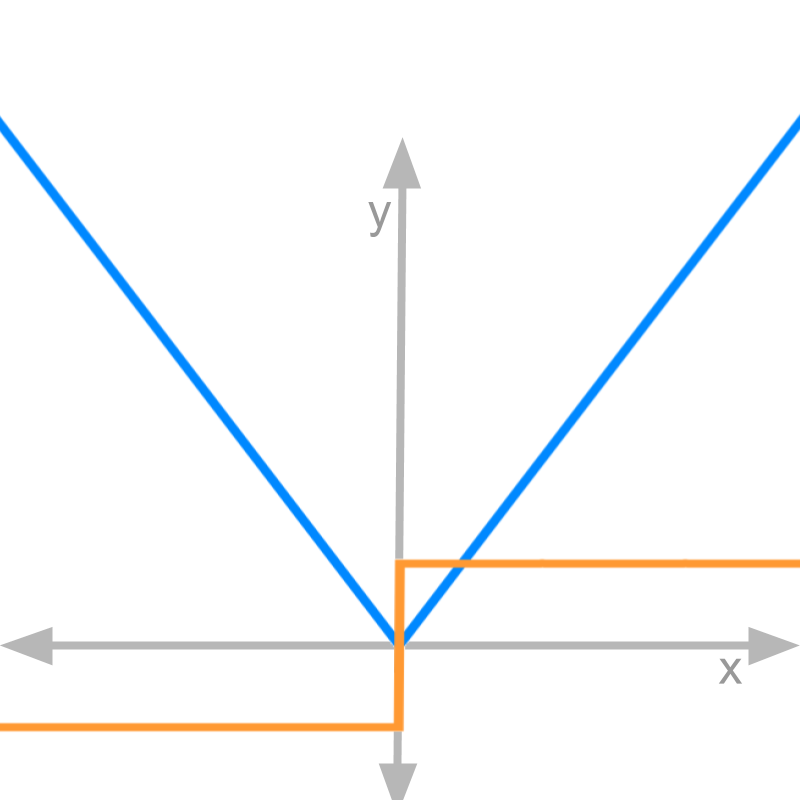 → eg: is not differentiable at
→ eg: is not differentiable at
establish the problem
Let us revise what we learned in "limits"
• when the function evaluates to indeterminate value , limit of the function helps to resolve its value.
• The function is defined at a point, if left-hand-limit and right-hand-limit are equal at the given point.
• The function is not defined at a point, if left-hand-limit and right-hand-limit are not equal at the given point.
• When, left-hand-limit and right-hand-limit are equal, it is commonly referred as limit of the function.
The derivative of a function is the instantaneous rate of change given as
The left-hand-limit and right-hand-limit are applicable to this expression. And fot some functions, LHL and RHL are to be computed to establish that this limit exists. The objective of this lesson is to learn when the LHL and RHL are computed.
positive side of mod x
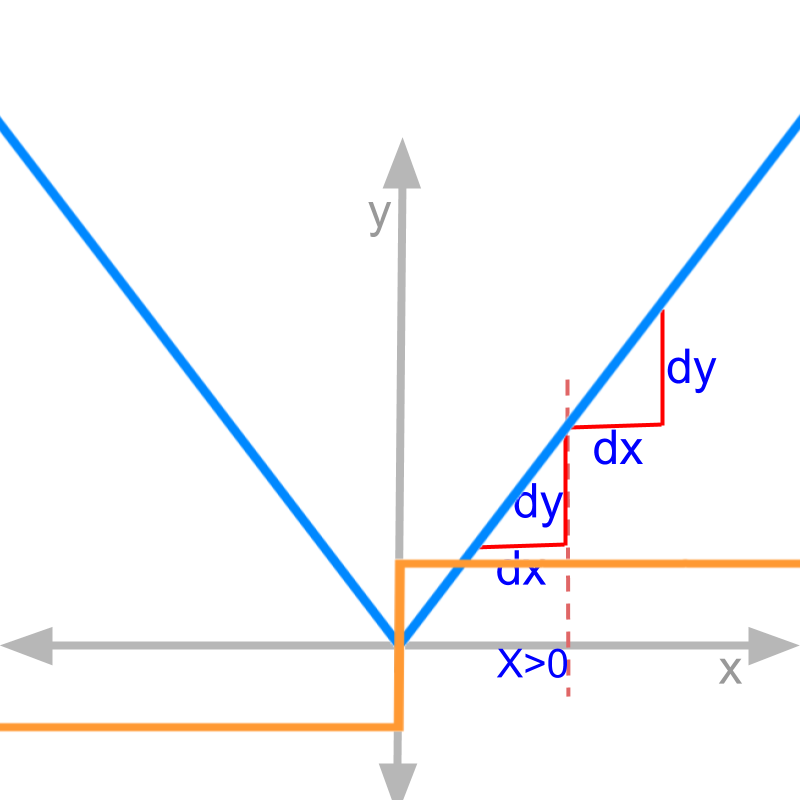
The figure shows in blue. We need to compute .
Derivative by first principles
for : and
right-hand-limit
left-hand-limit
The above implies that
• the limit exists for
• the expression under limit is continuous for
Note that, the expression under limit is . This expression is continuous and defined for .
Since the expression is the derivative of the function , the derivative of the function is defined for .
negative side of mod x
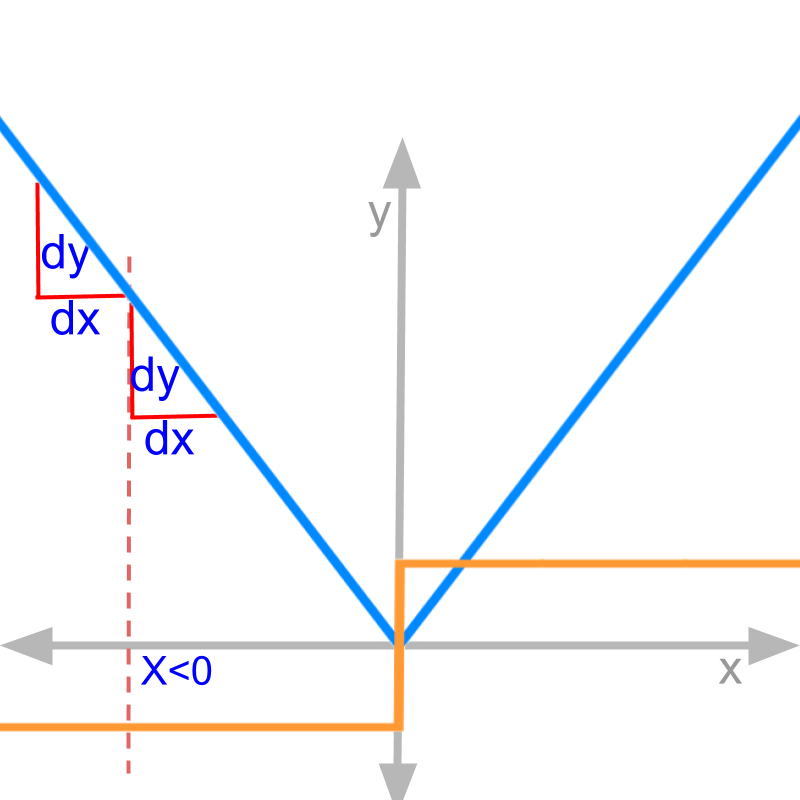
Derivative by first principles:
for : and
right-hand-limit
left-hand-limit
This implies that
• the limit exists for
• the expression under limit is continuous for
Note that, the expression under limit is . This expression is continuous and defined for .
Since the expression is the derivative of the function , the derivative of the function is defined for .
mod x at 0
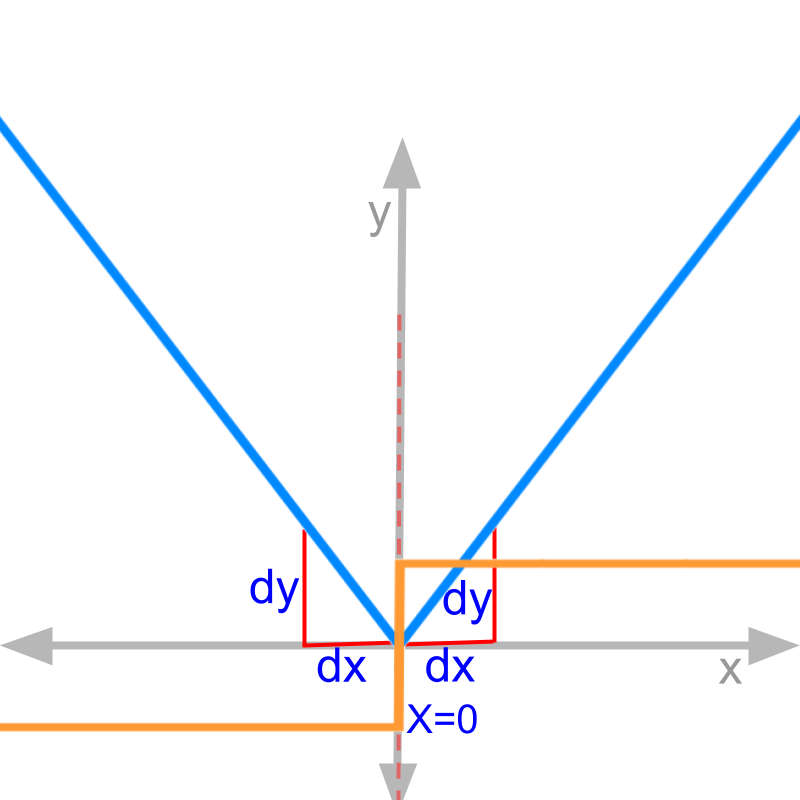
The figure shows in blue. We need to compute at .
Derivative by first principles: finding limits at
left hand limit
for :
right hand limit
for :
At , left-hand-limit is and right-hand-limit is .
This implies that
• the limit does not exist at
• the expression under limit is not continuous at
Note that, the expression under limit is . This expression is not defined at . Since the expression is the derivative of the function , the derivative of the function is not defined for .
-able suffix is can-do

The figure shows in blue.
It is proven that
• for , the derivative is defined.
• for , the derivative is defined.
• for , the derivative is not defined.
This is referred as differentiability of the function.
• The function is not differentiable at .
• The function is differentiable for .
differentiable
A function is differentiable at a point, if the instantaneous rate of change at that point is continuous.
A function is continuously differentiable, if the instantaneous rate of change is continuous for any and all points from
A function is continuously differentiable in a range `a
The instantaneous rate of change or the derivative-limit is given as
.
tan x

Finding differentiability of .
Derivative is .
the result of derivative is proven later
Figure shows in blue and in orange. From the left and right side limits of , it is found that the function is not continuous at .
At where ,
the derivative
This implies that the function is not differentiable at .
It can be observed in the figure that the derivative takes very high value.
cube root x
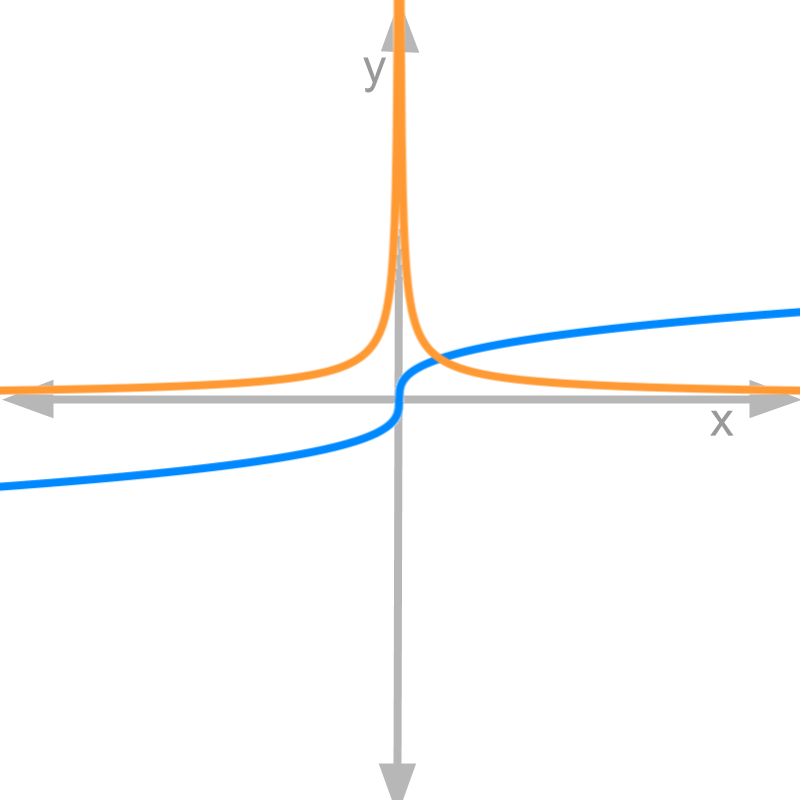
Finding differentiability of .
Derivative is .
the result of derivative is proven later
Figure shows in blue and in orange. From the left and right side limits of , the function is continuous at .
At , the derivative
This implies that the function is not differentiable at .
It can be observed in the figure that the derivative takes very high value at .
square root
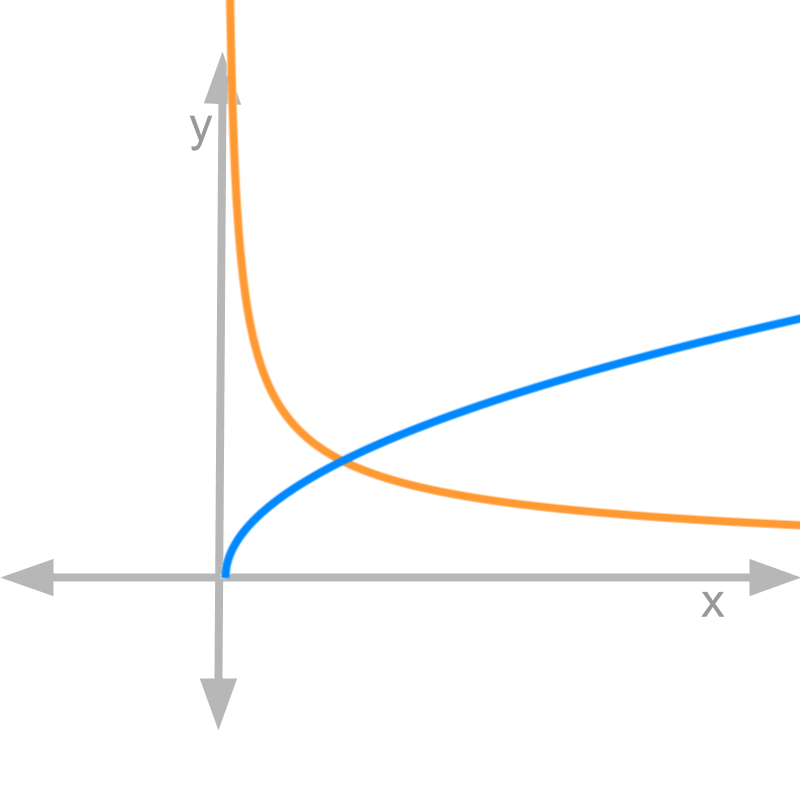
Finding differentiability of .
Derivative is .
the result of derivative is proven later
Figure shows in blue and in orange. Note that the function is not defined for .
This implies, the function is not differentiable for .
reciprocal x
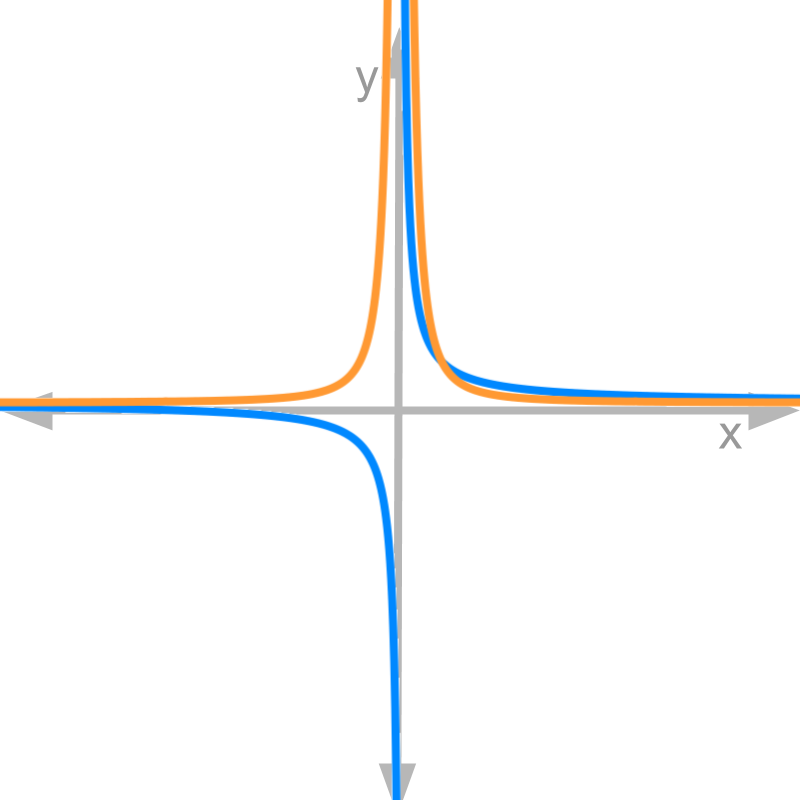
Finding differentiability of
Derivative is .
the result of derivative is proven later
Figure shows in blue and in orange. From the left and right side limits of , it is derived that the function is not continuous at .
At , the derivative
Is a continuously differentiable function?
The answer is "No. It is not differentiable at ". It can be observed in the figure that the derivative takes very high value at .
reciprocal x squared
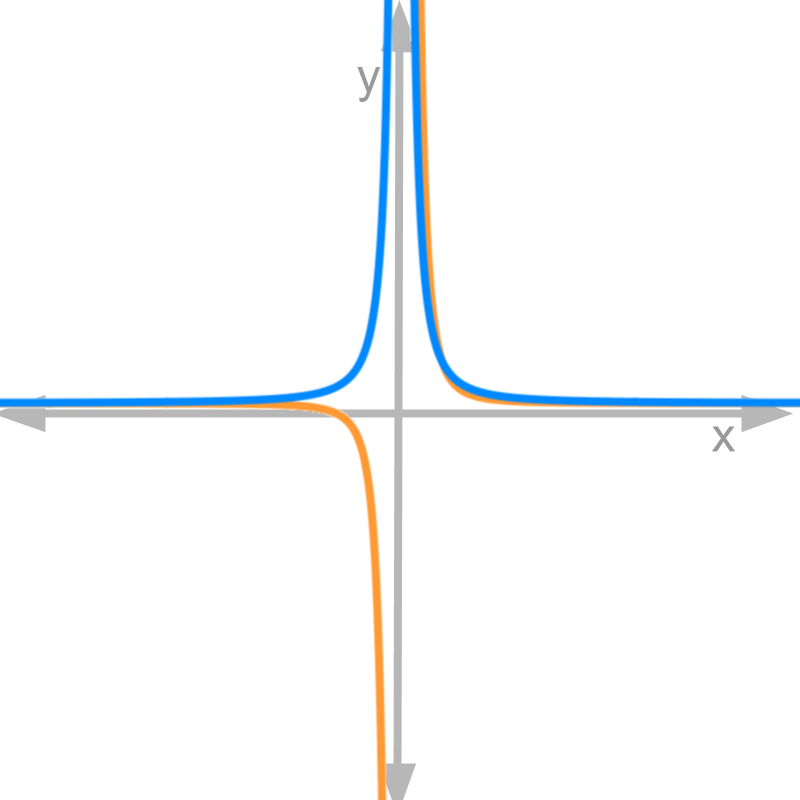
Finding differentiability of .
Derivative is .
the result of derivative is proven later
Figure shows in blue and in orange. From the left and right side limits of , it is derived that the function is not continuous at .
At , the derivative
from right and left hand limits
Is a continuously differentiable function?
The answer is "No. It is not differentiable at ". It can be observed in the figure that the derivative takes at .
summary
Differentiability of a Function: A function is differentiable at point if the derivative-limit is defined. That is,
right-hand-limit and left hand limit are equal and evaluates to a real value.
A function is differentiable at a point, if the instantaneous rate of change at that point is continuous.
A function is continuously differentiable, if the instantaneous rate of change is continuous for any and all points from
A function is continuously differentiable in a range `a
The instantaneous rate of change or the derivative-limit is given as
.
Outline
The outline of material to learn "Differential Calculus" is as follows.
• Detailed outline of Differential Calculus
→ Application Scenario
→ Differentiation in First Principles
→ Graphical Meaning of Differentiation
→ Differntiability
→ Algebra of Derivatives
→ Standard Results